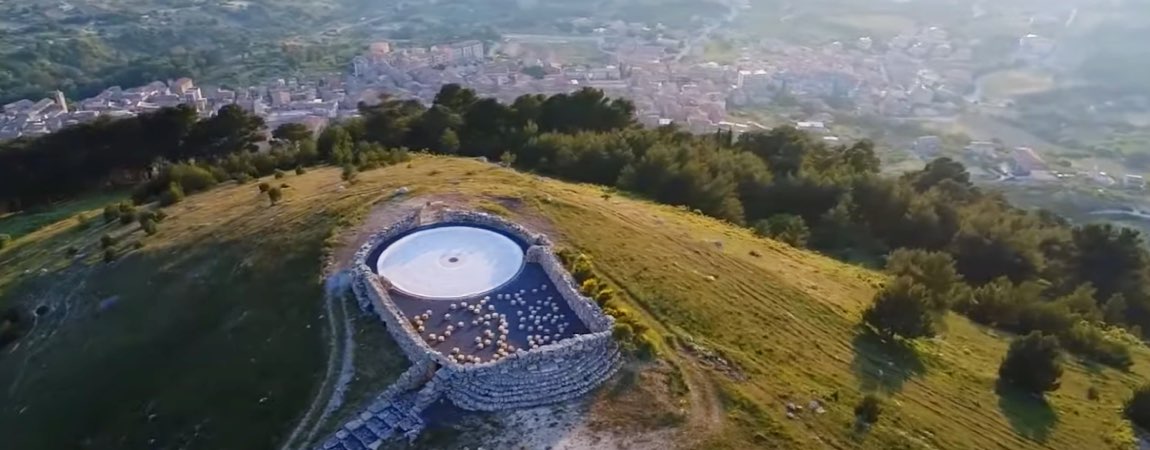
Santo Stefano Quisquina is a true natural and human oasis entirely surrounded by the Sicani Mountains. An environment and a climate that have attracted human presence since time immemorial, which here has integrated into an ideal symbiosis with nature.
The toponym, from the ancient Greek term for "crown” (στέφανος – “stéfanos”), effectively describes the environment in which Santo Stefano Quisquina stands: the mountains that surround it, enclosing it like a crown, which also appears in the municipal banner.
A first agro-pastoral community was present here even before the first historical testimony, dating back to Xth century, at the dawn of the Christian reconquest of the island: already the first hamlet, i.e. inhabited nucleus, had indicated - as mentioned on the basis of a previous toponym of Greek origin - in the protomartyr Stefano the dedicatee of the community, more recently entrusted to the protection of Santa rosalia, who lived for over a decade in the cave near which the hermitage named after her stands, and to Giacinto Giordano Ansalone, native martyr of Santo Stefano Quisquina.
The Middle Ages in Santo Stefano Quisquina
It is in the Middle Ages that the center consolidates: the fertile lands and the position protected from raids allow the establishment of a sufficiently large and industrious community, which begins to write the pages of the history of this city which had and has so much to offer. The lands on which it stands were, at the time of the first King of Sicily Roger II, owned by the Sinibaldis (relatives of Santa Rosalia), lords of Quisquina and Monte delle Rose. In 1296, below King Frederick III, was first lord of Santo Stefano Giovanni of Caltagirone.
Development of Santo Stefano Quisquina
Various noble families succeeded to the leadership of Santo Stefano Quisquina: in 1559 the Larcans sold the barony and a large part of its assets to the Protonotaro of the Kingdom of Sicily Alfonso Ruiz, who donated it to his mother Elisabetta in 1574, through whom (he was the wife of Carlo Ventimiglia of Belmonte), in 1599 all related rights passed to the Ventimiglia family, who dominated for a long time, creating a notable building and demographic development.
During the XNUMXth century the Ventimiglias had important works reconstructed such as the Baronial Castle , Mother Church. In 1812, with the promulgation of the new Constitution of the Kingdom of Sicily, Santo Stefano became part of the new District of Bivona.
It was on 4 January 1863 that it definitively took the name of S. Stefano Quisquina: previous names had been S. Stefano di Melia and then S. Stefano di Bivona. “Quisquina” refers to the name of the large surrounding wooded area: it derives from the Arabic “coschin” (from which the Sicilian coschina), which refers to the darkness brought by the branches of the vegetation.
Santo Stefano Quisquina today
Faithful to sustainable and symbiotic growth with the environment on which it was built, Santo Stefano Quisquina today is a city that lives its own roots e traditions without betraying them, but projecting themselves into tourist dimension which has long characterized an increasingly significant part of the economy. Give her valuable architecture to the Monte Cammarata oriented nature reserve, is an unmissable destination for your holidays in Sicily with a truly 360° experience.









